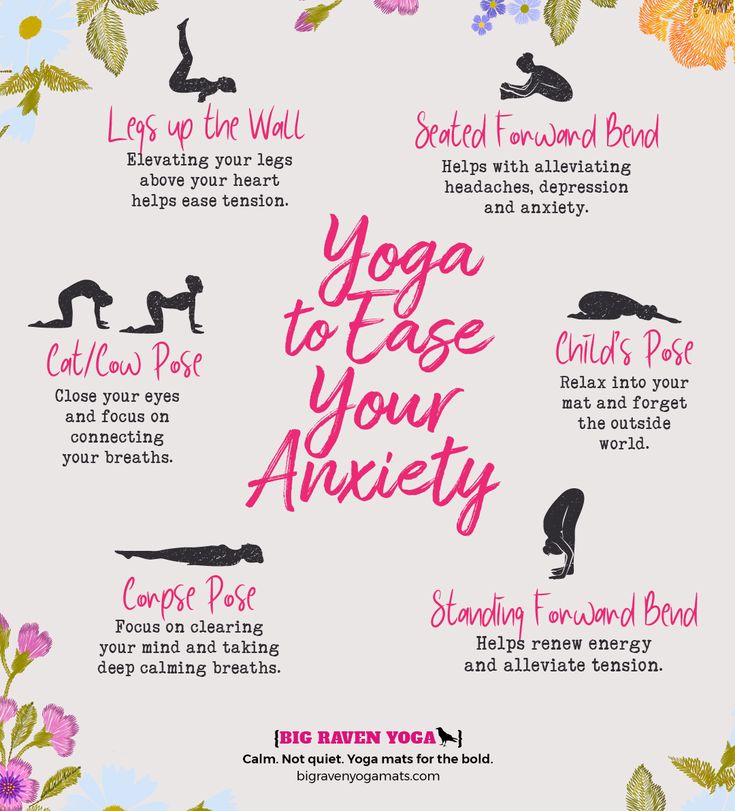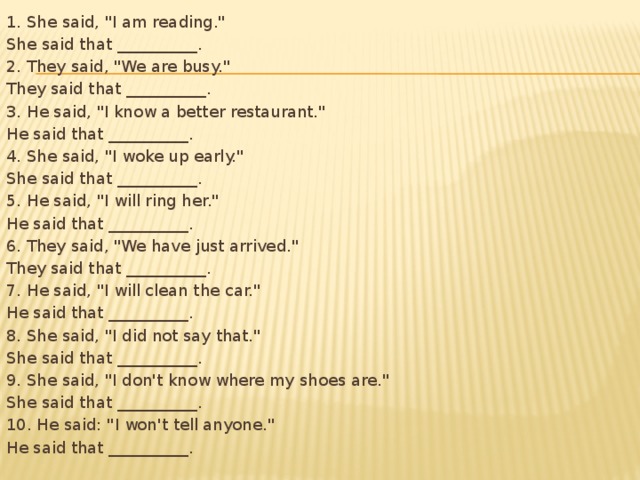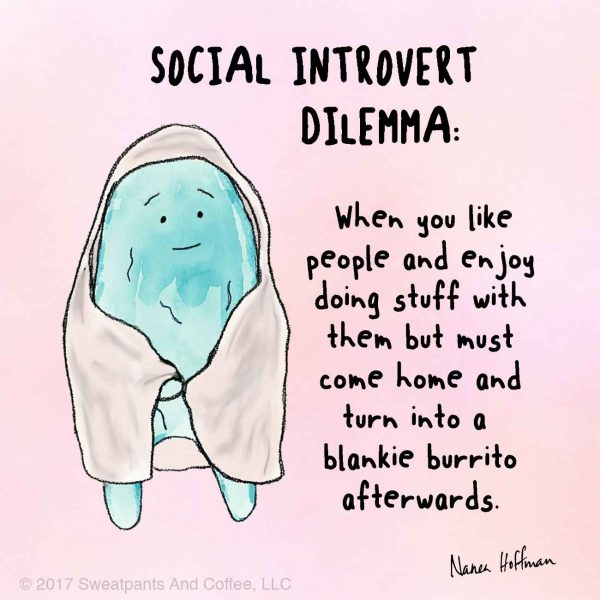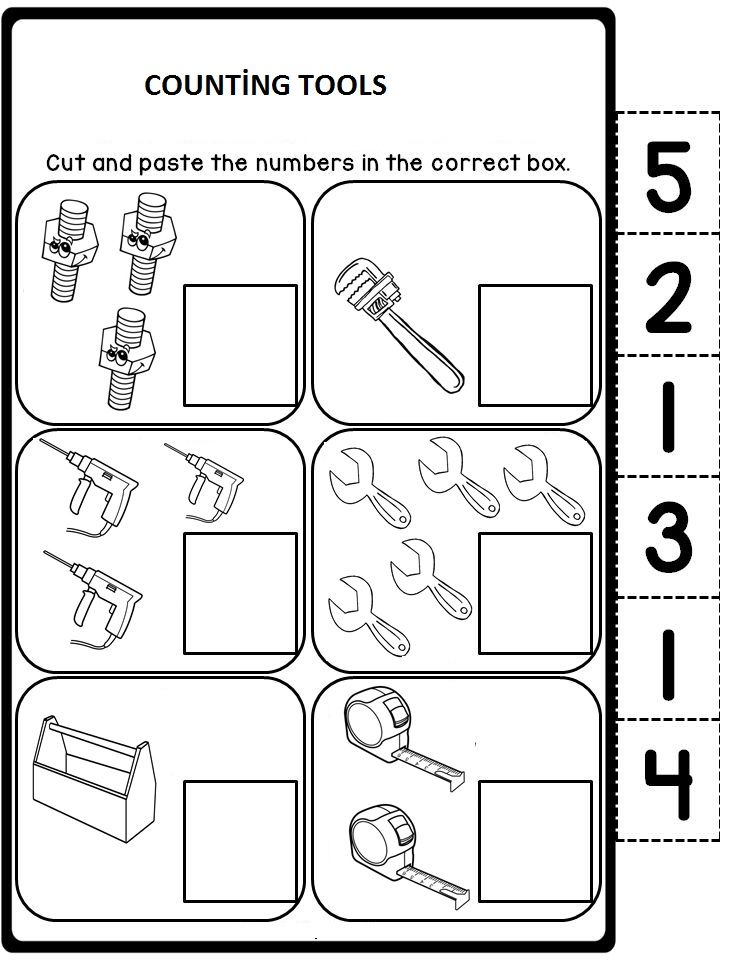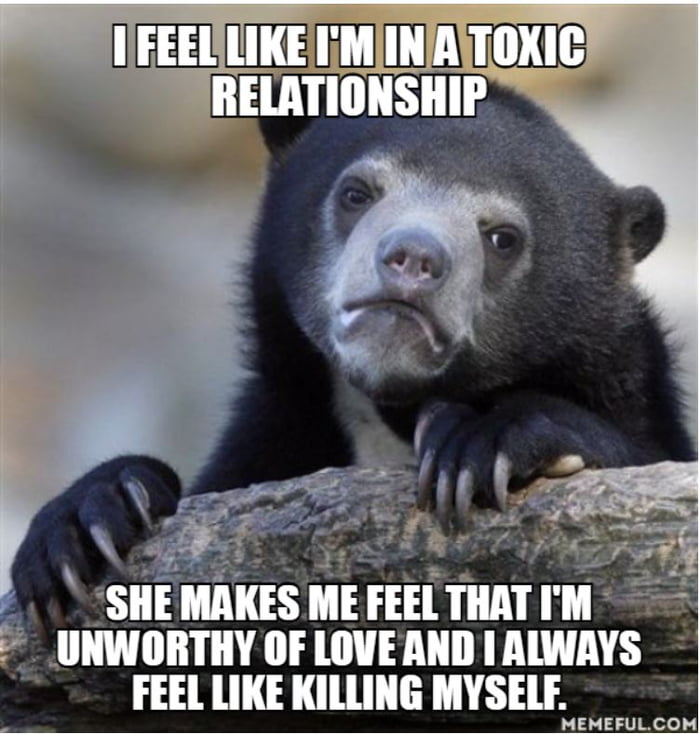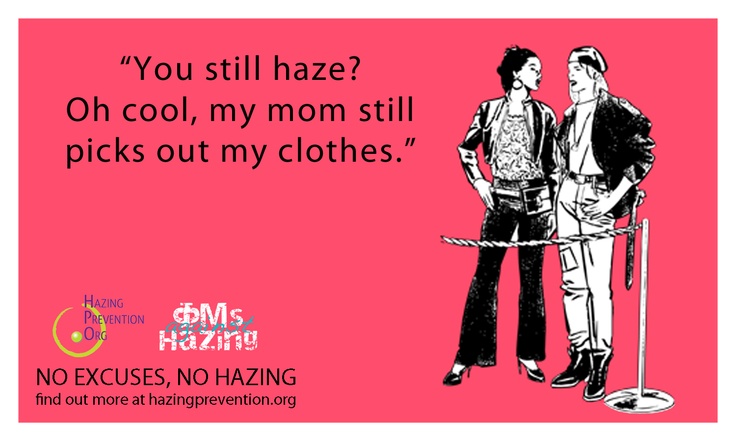How yoga helps anxiety
How Does Yoga Reduce Anxiety?
Contents
- Anxiety and Yoga Therapy
- Anxiety Disorders: A Background
- Why Use Yoga as an Adjunct Treatment for Anxiety?
- Growing Clinical Evidence
In recent years, increasing numbers of studies have emerged suggesting that yoga is an effective adjunct therapy for people experiencing anxiety disorders. This guide offers a short introduction to anxiety disorders, as well as the rationale behind including yoga in their treatment.
At some point, everyone experiences feelings of anxiety. From mild nerves to sheer panic, anxiety is a natural response to stressful situations, and one that can help us react appropriately when we are in danger. But for those living with an anxiety disorder, feelings of fear or worry aren’t a rational response to external circumstances – they are a disruptive and dominating influence.
Anxiety and Yoga TherapyWe tend to think of anxiety as a response to stressful circumstances. Whether it’s butterflies in the stomach or can’t-sit-still-nerves, there’s a wide range anxiety we can experience on an occasional basis that is unpleasant, but endurable – and to a certain extent, rational.
In contrast, when people with an anxiety disorder are asked to describe an anxiety attack, they often say a variation of “I thought I was going to die”. Whether it’s a persistent feeling of dread or intermittent panic, the hyperarousal of the fight/flight survival response creates a feeling of urgent fear and unignorable physical symptoms. So how can someone begin to calm down when their body is telling them that they are in mortal danger?
“Meditation, visualization, and focusing on breathing can help with letting go of worry and fear. The overall practice of yoga can elicit the relaxation response, allowing both the body and mind to gain a sense of calm and ease.”
Katharina Star, PhD. Counsellor Specialising in Anxiety
Yoga therapy can help people in this situation because they aren’t being asked to rationalise their way out of anxiety.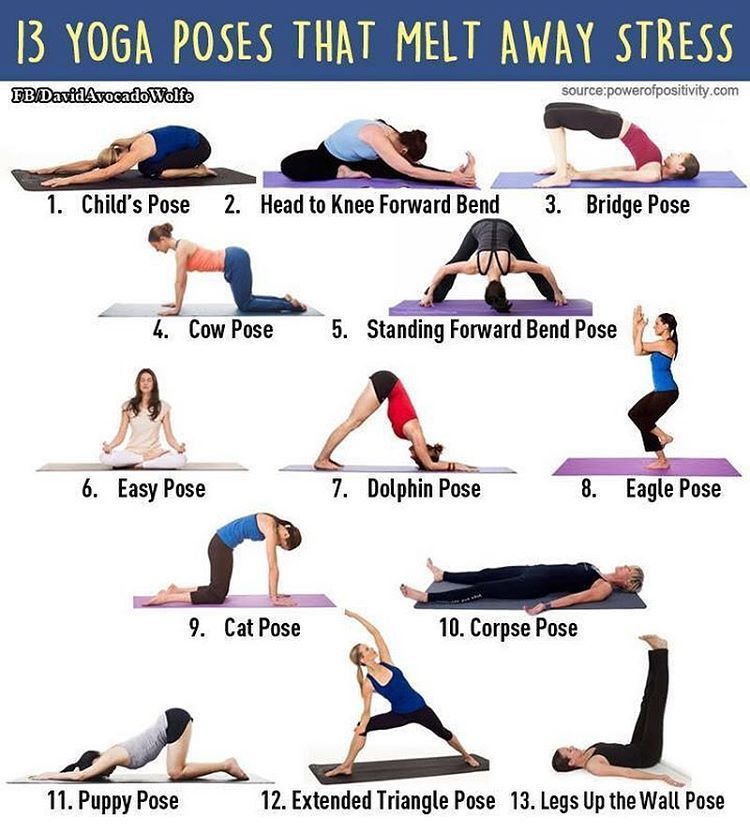 Instead, they are given tools that help them recognise the thoughts, feelings and actions that lead to heightened anxiety, and enact effective self-soothing methods. In a yoga class, they are also unconsciously learning to regulate their stress response and building resilience to stress.
Instead, they are given tools that help them recognise the thoughts, feelings and actions that lead to heightened anxiety, and enact effective self-soothing methods. In a yoga class, they are also unconsciously learning to regulate their stress response and building resilience to stress.
Someone who suffers with mild or subclinical experiences of anxiety may find support in a general yoga class. For those whose anxiety is more severe, however, a specialised course of yoga therapy (administered by highly-trained yoga professionals that understand the physical and psychological mechanisms of anxiety disorders) may be more appropriate.
Anxiety Disorders: A BackgroundAn umbrella term for a variety of mental health conditions, anxiety disorders share similar symptoms and traits – such as distress, sleep disturbances and difficulty in fulfilling social/occupational roles. They are also amongst the most commonly diagnosed mental health issues in the UK.
“Anxiety disorders have been associated with significant long-term disability.
They can be distressing for the person affected, their families, friends and carers, and can have an impact on their local communities.”
NICE Guidelines
There are seven anxiety spectrum disorders (which include generalised anxiety disorder, panic disorder and phobias) with a high incidence of co-occurrence between them – possibly because the existence of one anxiety disorder can trigger or contribute to the development of another.
For instance, someone with panic disorder may become housebound (a.k.a agoraphobic) in an attempt to avoid panic attacks, while someone with agoraphobia may experience repeated panic attacks (and therefore panic disorder) when faced with the possibility of going outside.
Anxiety disorders also appear in conjunction with other mental health issues, and often co-occur with Major Depressive Disorder (MDD). According to the Anxiety and Depression Association of America, nearly one-half of those diagnosed with depression are also diagnosed with an anxiety disorder.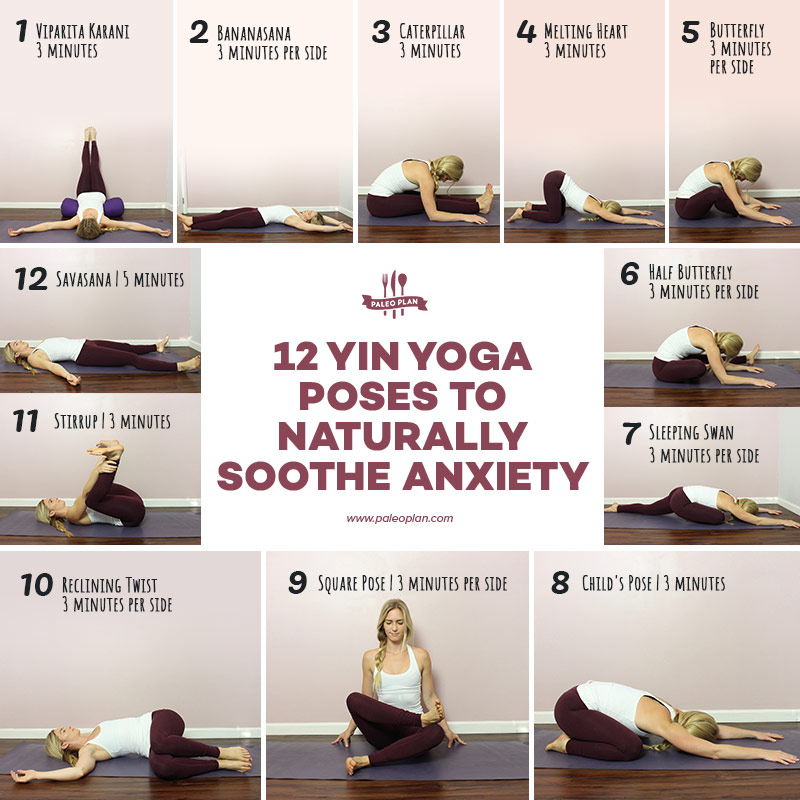
There are two possible explanations for the high levels of co-occurrence in anxiety and depression. It’s thought that people with anxiety may also be vulnerable to developing depression due to genetics, upbringing and environment – in short, that the two conditions share the same risk factors. However, it’s also possible that anxiety disorders have such an adverse impact on people’s lives that feelings of shame, hopelessness and low mood are a prevailing consequence.
In 2013, 8.2 million cases of anxiety were recorded in the UK. While some people present at A&E, (with shortness of breath, acute chest pain and a racing heartbeat convincing some – not unreasonably – that they are in physical danger) most people with anxiety will seek medical help through their GP. In the treatment of anxiety disorders, the NICE guidelines currently advise GPs to provide medication and/or a referral to high-intensity psychological intervention, as well as some self-help advice.
Cognitive Behavioural Therapy and applied relaxation techniques are often recommended, while SSRIs (a class of antidepressants) are the first line in pharmacological treatment.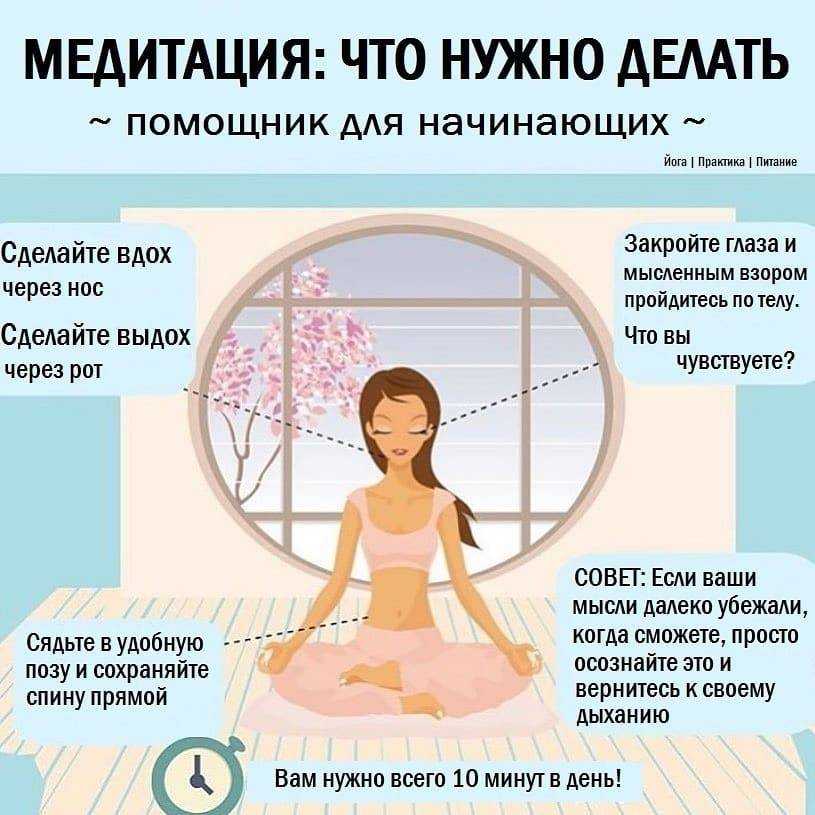 Those with severe anxiety may also be prescribed benzodiazepines – which act as an immediate anxiolytic – to alleviate short-term crises and help them move on to further treatment, but this is used in a limited fashion due to the potential for dependance. Beta-blockers can also be used to reduce heart rate.
Those with severe anxiety may also be prescribed benzodiazepines – which act as an immediate anxiolytic – to alleviate short-term crises and help them move on to further treatment, but this is used in a limited fashion due to the potential for dependance. Beta-blockers can also be used to reduce heart rate.
In the treatment of anxiety disorders, no single treatment works for everyone, and people may try a variety of medications and therapies before finding what most helps them manage (or recover from) this illness.
Why Use Yoga as an Adjunct Treatment for Anxiety?Yoga leads to a cessation of the fluctuations of the mind
Pantanjali
The impact of anxiety can be severe, and there are times that people feel dissatisfied with the solutions they are currently presented. While medication is often a vital part of any treatment plan, patients can sometimes be uncomfortable with side-effects or the thought of a difficult withdrawal.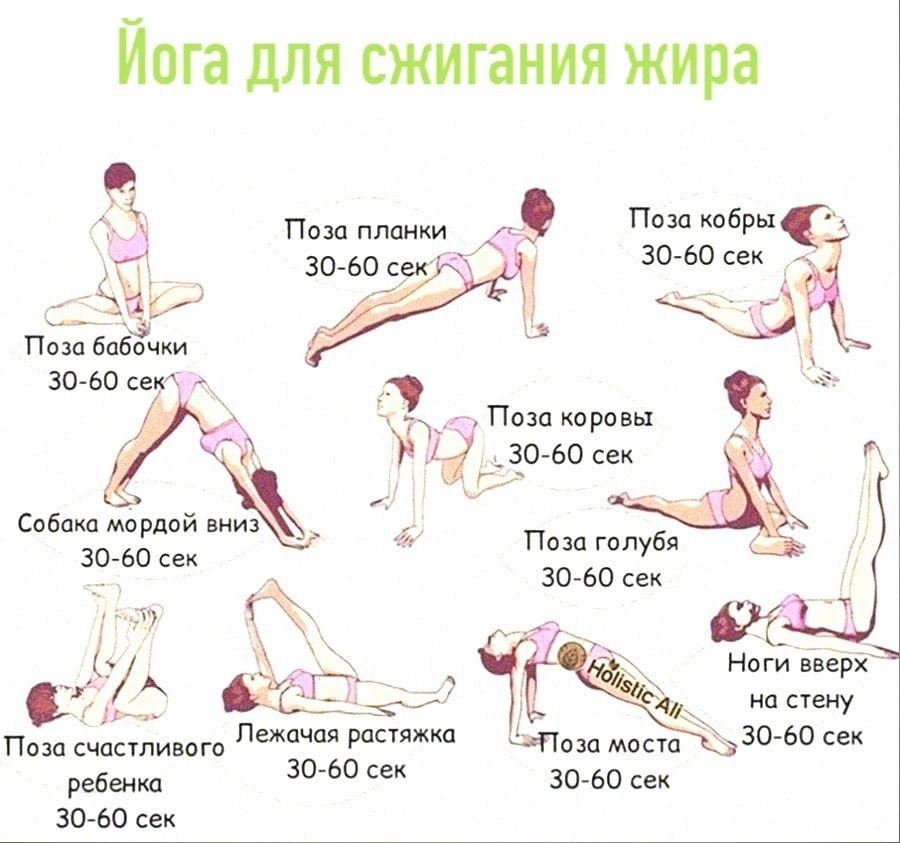 According to Baldwin and Polkinghorn (2005), 50% of people prescribed pharmacological intervention reported an improvement in symptoms, and a US-based study concluded that up to 30% of patients may be “treatment resistant” – finding front-line interventions ineffective.
According to Baldwin and Polkinghorn (2005), 50% of people prescribed pharmacological intervention reported an improvement in symptoms, and a US-based study concluded that up to 30% of patients may be “treatment resistant” – finding front-line interventions ineffective.
This goes some way to explain why 56% of those living with anxiety disorders seek complementary and alternative medicine (1) – hinting at a widespread desire for further support outside of traditional treatment plans. With a growing body of scientific literature to guide clinical practice in applying yoga as a treatment of anxiety, yoga therapy can step into this gap and provide additional support – helping people regulate their stress response, increase their resiliency and manage their anxiety.
When informed by research and applied by qualified professionals, yoga therapy for anxiety is a safe and inexpensive treatment option that people can use over the long-term. While an ancient practice, remarkably Patanjali’s eightfold system of yoga contains many elements used in modern treatments for anxiety: cognitive reframing, behavioural recommendations, relaxation techniques focused on breath regulation, mindfulness of sensory input, as well as methods for greater cognitive flexibility, concentration and downregulation of distress.
“Some postures are challenging, but you are learning to relax under physical duress and this can help you handle long-term anxiety.”
Heather Mason
There may be cases where yoga can be appropriately applied as a primary treatment in response to anxiety disorders, but in most cases, it’s the integration of yoga with psychotherapy and pharmaceutical intervention that could significantly support recovery. Breathing techniques in particular offer a method through which people can reduce their anxiety in the short term, allowing them to properly engage with other therapeutic practices. Along with basic movements and yogic relaxation techniques, these can easily become a part of a wide array of treatment pathways.
As a mind-body practice, yoga allows people to become aware of the link between their minds and bodies in a way which can help them become less anxious. For example, shallow breathing may contribute to a heightened stress response, or repeated patterns of behaviour might ultimately worsen overall anxiety (for instance, relying on alcohol to calm down).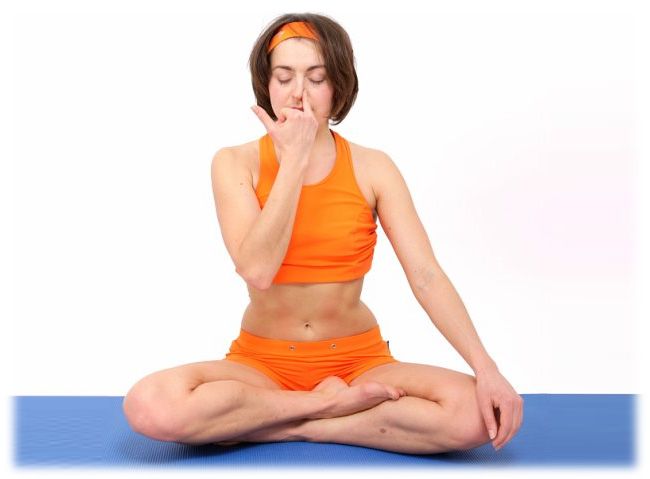 Yoga increases mind-body awareness, as well as offering a form of relaxation which can replace unhealthy coping mechanisms.
Yoga increases mind-body awareness, as well as offering a form of relaxation which can replace unhealthy coping mechanisms.
Various studies have been completed which point to the clinical value in including yoga in anxiety treatment. One such example included a 12-week yoga intervention, which was was associated with greater improvements in mood and anxiety than a metabolically matched walking exercise. (2) After a 10-week yoga programme, other researchers concluded that yoga can reduce stress, anxiety and improve health status in several key domains. (3).
In Germany in 2005 24 women who described themselves as ‘emotionally distressed’ took two 90-minute yoga classes a week for three months, while a control group maintained their usual activities without engaging in an exercise or stress-reduction program during. At the end of the three months, the women in the yoga group reported improvements in perceived stress, depression, anxiety, energy, fatigue and well-being.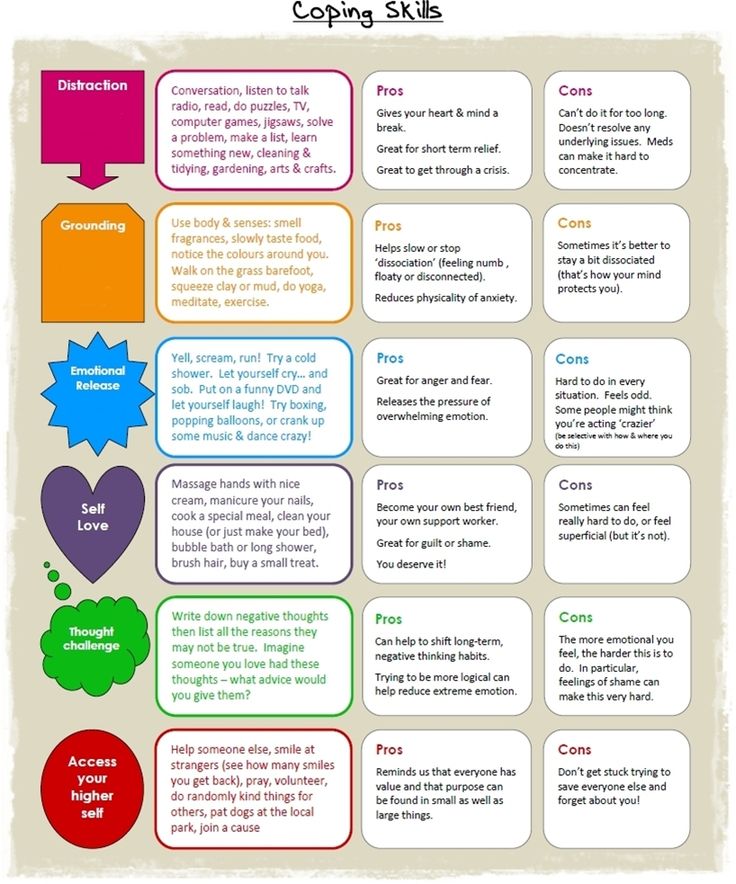 Most impressively, depression scores improved by 50% and anxiety scores by 30%. (4)
Most impressively, depression scores improved by 50% and anxiety scores by 30%. (4)
If you’re a yoga, health or psychology professional (or other interested party) and would like to find out more about how yoga can be used to help your clients, you can read more about the use of yoga therapy in the treatment of anxiety with Yoga for Mental Health. If you are experiencing an anxiety disorder and are interested in working with a yoga therapist, please see our Minded Clinic.
(Kessler, R. C., Soukup, J., Davis, R. B., Foster, D. F., Wilkey, S. A., van Rompay, M.i., & Eisenberg, D. M. (2001) The use of complementary and alternative therapies to treat anxiety and depression in the United States. American Journal of Psychiatry)
Streeter, C. C., Whitfield, T. H., Owen, L., Rein, T., Karri, S. K., Yakhkind, A., & Jensen, J. E. (2010). Effects of yoga versus walking on mood, anxiety, and brain GABA levels: a randomized controlled MRS study. The Journal of Alternative and Complementary Medicine, 16(11), 1145-1152.
Smith, C., Hancock, H., Blake-Mortimer, J., & Eckert, K. (2007). A randomised comparative trial of yoga and relaxation to reduce stress and anxiety. Complementary therapies in medicine, 15(2), 77-83
Brown, R. P., & Gerbarg, P. L. (2005). Sudarshan Kriya Yogic breathing in the treatment of stress, anxiety, and depression: part II—clinical applications and guidelines. Journal of Alternative & Complementary Medicine, 11(4), 711-717.
Anxiety for yoga: Benefits and poses
Many people use yoga to help with their anxiety. There is some evidence to suggest that it is useful, particularly in people living with obsessive-compulsive disorder (OCD) and generalized anxiety disorder (GAD).
Anxiety is the body’s response to stress and is part of the natural fight, flight, or freeze reflex.
Anxiety might resemble a feeling of distress, unease, or dread. Its intention is to keep a person alert or aware during times of threat.
Sometimes, anxiety can get in the way of everyday life. This is particularly true for people who live with health conditions that can cause excessive anxiety, such as OCD or GAD. Doctors believe that exercise, including yoga, can help people to manage the symptoms of anxiety.
This is particularly true for people who live with health conditions that can cause excessive anxiety, such as OCD or GAD. Doctors believe that exercise, including yoga, can help people to manage the symptoms of anxiety.
This article looks at why yoga is beneficial for anxiety, which yoga poses may help with anxiety, how to perform them, and the research to support these ideas.
Yoga is a form of exercise that includes stretching, breathing, relaxation, and meditation.
According to Mental Health America, it is good for almost everyone. The advocacy group also said it could have a positive effect on people with mental health conditions, including:
- anxiety
- attention-deficit hyperactivity disorder
- post-traumatic stress disorder
- schizophrenia
Researchers have carried out some studies on the benefits of yoga for anxiety. While the evidence base is small, it is promising.
An older systematic review from 2005 in the British Journal of Sports Medicine found that yoga could help with the symptoms of OCD, examination anxiety, neurosis, and GAD.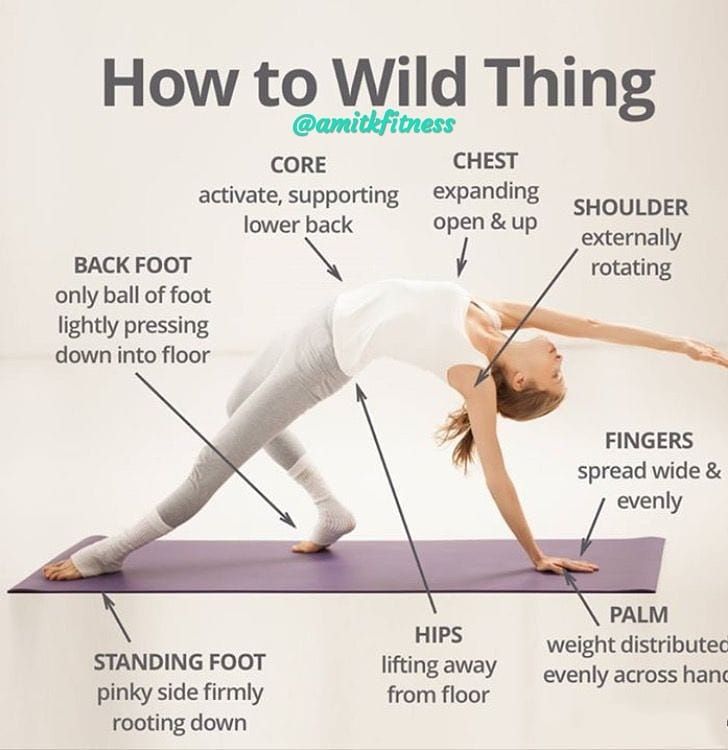
There are many types of yoga. Some popular forms include:
- Satyananda: This style includes gentle poses, deep relaxation, and meditation. It is suitable for beginners and can help reduce stress.
- Hatha yoga: One of the most popular forms of yoga, Hatha is also quite gentle. It involves holding poses and concentrating on breathing. Hatha yoga is suitable for beginners and can help to reduce stress.
- Power yoga: As the name suggests, this tends to be more intense and involves more movement through poses. It focuses on fitness as well as relaxation.
Scientists do not know which poses are best for anxiety. The beneficial effects of various poses will differ for everyone, but common calming poses include:
Sukhasana
Share on Pinterest
To perform Sukhasana:
- Sit on the floor with legs crossed.
- Make sure the torso aligns with the hips, and the spine is straight.
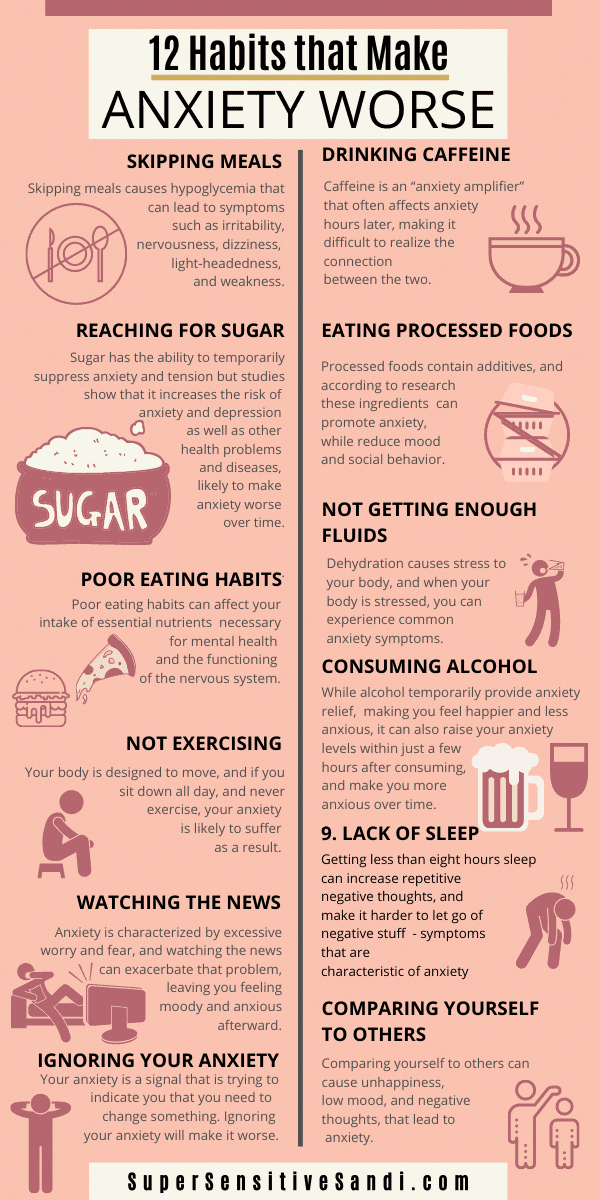
- Lengthen the tailbone.
- Move the shoulders down and back.
- Close the eyes and focus on the breath.
- Remain in the position, focusing on the breath, until feeling calmer.
Upward-Facing Dog
Share on Pinterest
To perform Upward-Facing Dog:
- Lie flat on the front.
- Point the toes out and down, away from the body.
- Place the hands flat on the floor or mat near the shoulders.
- Push up through the hands and the feet until the whole body is off the floor.
- Lift the chest and head until the back curves while keeping the shoulders back.
- Take several deep breaths, then gently release down.
Downward-Facing Dog
Share on Pinterest
To perform Downward-Facing Dog:
- Get down on all fours on the floor, with the back flat, not arched or dipped.
- Push against the floor with the toes to lift the hips into the air.
- Straighten the arms.
- Straighten the legs as much as is comfortable.
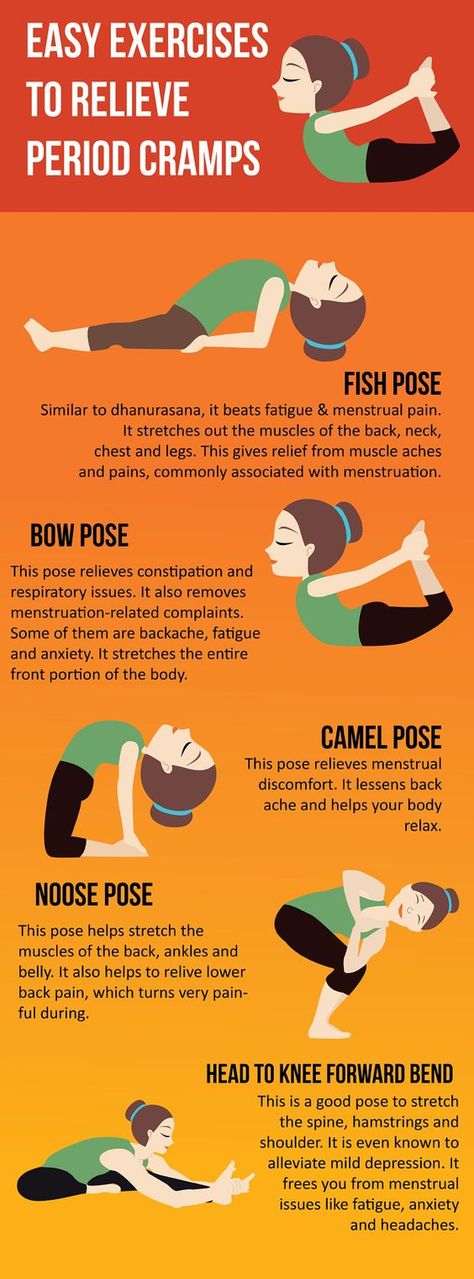
- Keep pushing against the floor with the hands to raise the hips higher.
- Take a few deep breaths before releasing down gently.
Forward Bend
Share on Pinterest
To perform the Forward Bend:
- Stand up straight with the hands at the sides.
- Slightly bend the knees.
- Bending from the hips, and bending the knees as much as necessary, gently fold the torso down until the stomach rests on the thighs.
- Either hold the ankles or let the arms hang down.
- Take some deep breaths before slowly standing up.
Child’s Pose
Share on Pinterest
To perform Child’s Pose:
- Kneel with the big toes touching each other, and the knees open slightly wider than the hips.
- Bend forward, with the arms and chest stretching toward the top of the yoga mat.
- Rest the forehead on the mat, with the arms stretched out in front.
- Take as many deep breaths as desired before gently sitting back up.
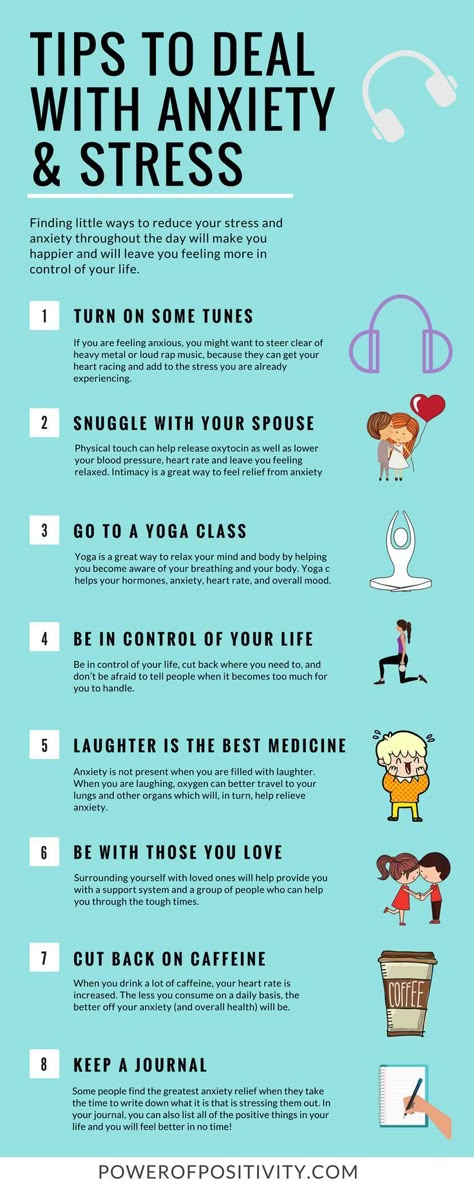
Savasana
Share on Pinterest
To perform Savasana:
- Lie flat on the back with the arms on the floor a few inches from the body.
- Turn the palms so that they are facing upward.
- Keep the knees slightly open and the toes pointing outward.
- Relax every part of the body.
- Close the eyes and focus on breathing.
- Breathe slowly and deeply for as long as it takes to feel calmer.
- Roll onto the right side for a few breaths, then sit up.
Experts believe yoga helps with anxiety by reducing levels of stress hormones in the body. The body releases stress hormones as part of the fight, flight, or freeze response. This response can lead to symptoms of anxiety.
Slowing and concentrating on the breath can reduce the fast heartbeat and rapid breathing that people with anxiety often experience. The meditation part of yoga can also help people to clear their minds and become calm.
It is worth noting that all types of exercise trigger the body to release endorphins.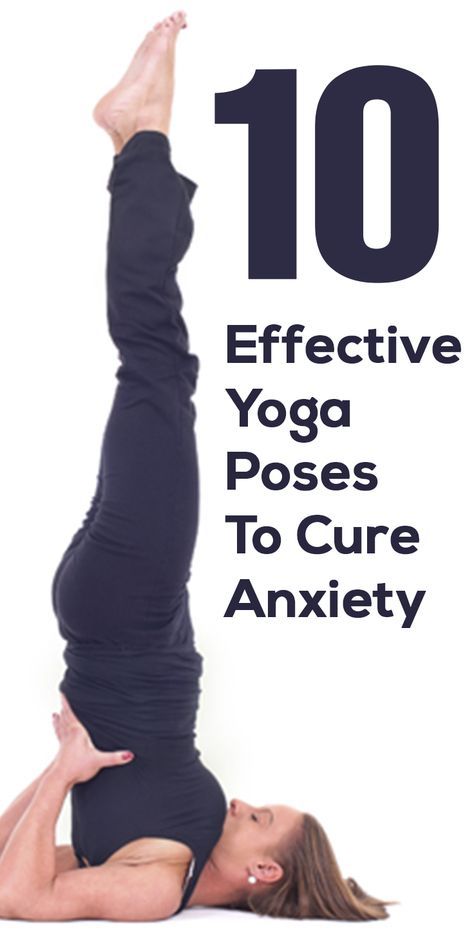 Endorphins are neurotransmitters, a type of hormone that boosts a person’s mood and reduces stress.
Endorphins are neurotransmitters, a type of hormone that boosts a person’s mood and reduces stress.
Yoga is a form of exercise that focuses on breathing, stretching, and relaxing. Many doctors believe it can help with the symptoms of anxiety. It does this by reducing the level of stress hormone in the body and helping people feel calm.
There are many types of yoga and different poses that people can try. These include Downward-Facing Dog, Upward-Facing Dog, Child’s Pose, and Savasana. People can experiment with different poses to find those that work best for them.
9 postures to relieve anxiety
Anxiety – experiencing occasional anxiety is a normal part of life. However, people with anxiety disorders often experience intense, excessive, and persistent worry and fear about everyday situations. Frequently, anxiety disorders involve recurring episodes of sudden attacks of intense anxiety and fear or terror that peak within minutes (panic attacks). nine0004
nine0004
These feelings of anxiety and panic interfere with daily activities, are difficult to control, are out of proportion to the real danger, and can persist for a long time. You may avoid places or situations, stop watching the news, etc. to prevent these feelings.
Examples of anxiety disorders include generalized anxiety disorder, social anxiety disorder (social phobia), specific phobias, and separation anxiety disorder. You may have more than one anxiety disorder. Sometimes anxiety arises due to a health condition that requires treatment. nine0004
Whatever form of anxiety you have, yoga practice can help.
Yoga for Coping with Anxiety Disorder
Many people turn to yoga to relieve stress and anxiety. Learn how anxiety yoga works, along with a few basic postures to get you started.
Many people living with anxiety use a combination of methods to manage their symptoms, including therapy, lifestyle changes, and often alternative therapies such as yoga.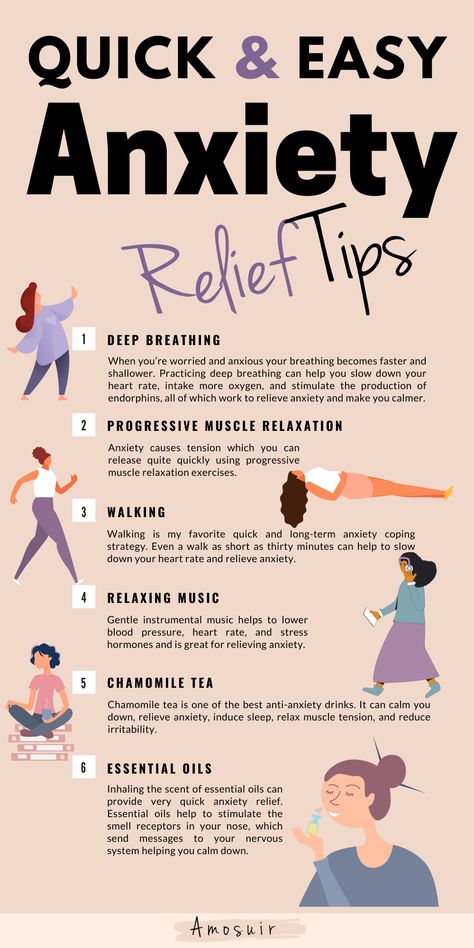 nine0004
nine0004
Anxiety disorders affect more than 40 million (18.1%) adults over the age of 18 each year. Anxiety is treatable, but only about 40% of people receive treatment.
Years of research has shown that yoga can help relieve stress and anxiety. It works by calming an overactive nervous system, relaxing both the mind and body.
How does yoga help with anxiety?
The 2021 Mental Health Report shows that the number of people seeking help for their anxiety disorders has skyrocketed during the COVID-19 pandemicTherefore, the need for effective anxiety management is particularly high now.
Yoga is an affordable, adaptable practice that you can practice from the comfort of your own home. The practice can be modified to accommodate bodies of all types, abilities and backgrounds.
If you live with chronic anxiety, your nervous system, especially the sympathetic nervous system, also known as the "fight, flight or freeze" system, is overworked. This means that your body has an increased response to perceived threat, leading to anxiety responses such as agitation, stress, and heart palpitations.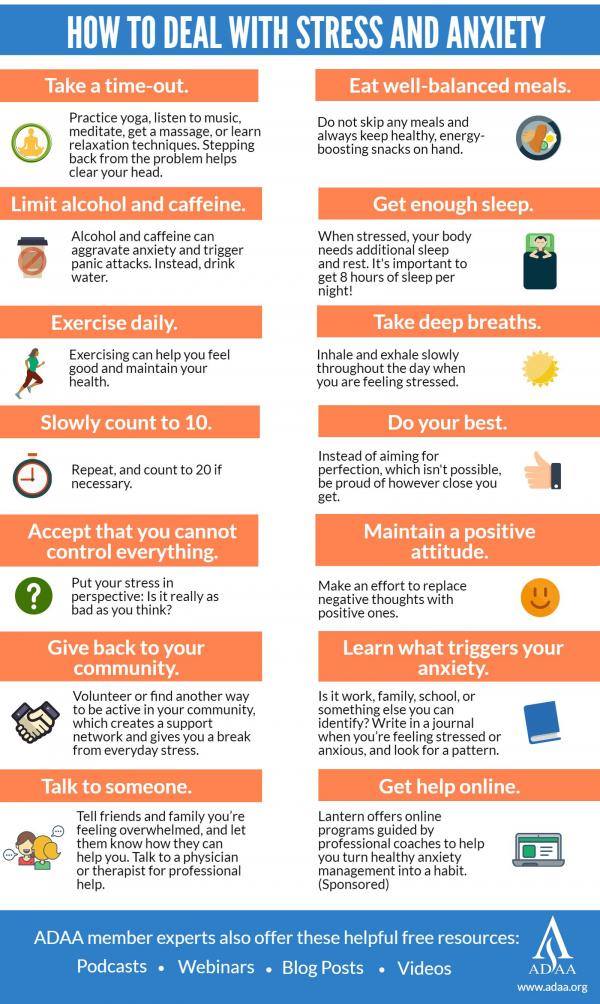 nine0004
nine0004
As a consequence, you also have reduced activity in your parasympathetic nervous system or the rest and digestion system. This system regulates your physiological functions such as heart rate and digestion.
Stimulation of the vagus nerve, a key part of the rest and digestion system, is the key to modulating the fight, flight or freeze response to stress, according to research.
One way to stimulate the vagus nerve is to practice yoga. nine0036
Yoga postures stimulate the vagus nerve
The parasympathetic nervous system helps us feel safe and calm, and various aspects of yoga help to stimulate it.
- Yoga stimulates the vagus nerve, increasing interoception, the way we perceive sensations in the body.
- Practices that enhance interoception allow a person to distinguish between safe and frightening or dangerous situations.
- Yoga also increases vagal tone, which means your body can relax more quickly after stress.
 Increased vagal tone can reduce symptoms of nervous system dysfunction, such as feelings of anxiety. nine0042
Increased vagal tone can reduce symptoms of nervous system dysfunction, such as feelings of anxiety. nine0042 - Yoga offers many opportunities to experience interoception and stimulate the vagus nerve. Through physical movement, you can explore the sensations that occur in your body by developing an understanding of which muscles are tensing, stretching, or relaxing.
Pranayama with breathing connects mind and body
Yoga, which means union, connects the mind and body through the breath. Pranayama, a Sanskrit term describing how breathing is regulated during yoga, is a powerful tool for calming the sympathetic nervous system. nine0004
Pranayama is a voluntary breathing practice that sends messages to the brain through the respiratory system.
Some breathing practices can help with feelings of relaxation and calmness, such as long exhalation or diaphragmatic breathing, primarily by stimulating the vagus nerve and linking the vagus nerve to heart rate variability.
Some breathing practices should be invigorating and more stimulating, such as Kapalabhati ("Breath of Fire"), which can stimulate the sympathetic nervous system rather than the parasympathetic. nine0004
Depending on the severity of your anxiety symptoms, pranayama that encourages deeper and more regular breathing, such as ujjayi breathing, may be more appropriate.
Meditation promotes relaxation
Meditation is perhaps the most interoceptive practice of all and encourages us to watch our thoughts. Practicing meditation can help with self-regulation and mindfulness, which helps keep us in our body and out of our thoughts.
nine0003 Yoga postures (asanas) are a means of exploring the present moment. Watching your thoughts as they arise during conscious movement is the practice of developing awareness. This may promote relaxation. A 2012 review of research indicates that meditative therapies (eg, meditation, yoga, qigong, etc.) are effective tools for relieving anxiety symptoms.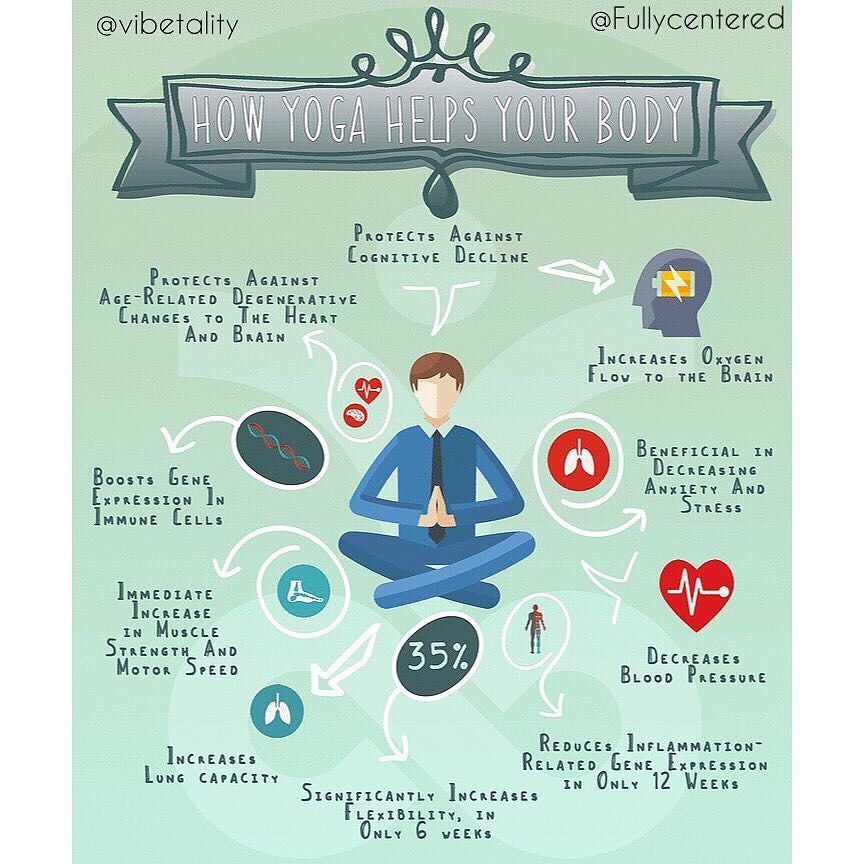
Yoga Postures for Worry and Anxiety
The best yoga poses for relieving anxiety are those that are pleasing to your body and help you ground yourself and find a sense of calm. nine0004
On some days, slower practices such as hatha or gentler practices such as restorative or yin yoga may be just what you need to clear your mind. Such practices can stimulate the relaxation response of the body.
On other days, quicker exercises such as vinyasa can be just as effective. Movement can help relieve stress and anxiety.
A high level of anxiety may mean that you cannot always start your yoga practice with relaxation techniques. nine0004
When there is a high activity of the sympathetic nervous system, the mind is likely to jump, making motionless postures (sitting or otherwise) unpleasant.
Those who benefit from faster yoga styles tend to develop the necessary breathwork, self-regulation, and interoception skills to remain calm and focused throughout the practice.
Without these skills, yoga at a faster pace can be overly stimulating for some people with anxiety. nine0004
However, postures or practices should be followed after some aspect of the movement when nervous or anxious energy is released and people feel calmer.
More experienced practitioners may find that standing and balancing postures can help with feeling grounded and present, but they may be more beneficial after movement.
Yoga Sequence for Anxiety
The following yoga sequence offers suggestions for gentle movements to promote relaxation and stress relief. nine0004
Several postures are aimed at relieving tension in the neck and shoulders. Others help relax the psoas, the hip flexor that connects to the diaphragm. This can constrict and shorten the breath when it is tense, which can contribute to feelings of restlessness.
If you need more movement from your yoga practice, try Sun Salutation (Surya Namaskar). Sun salutation synchronizes breathing and movement to move from one posture to another.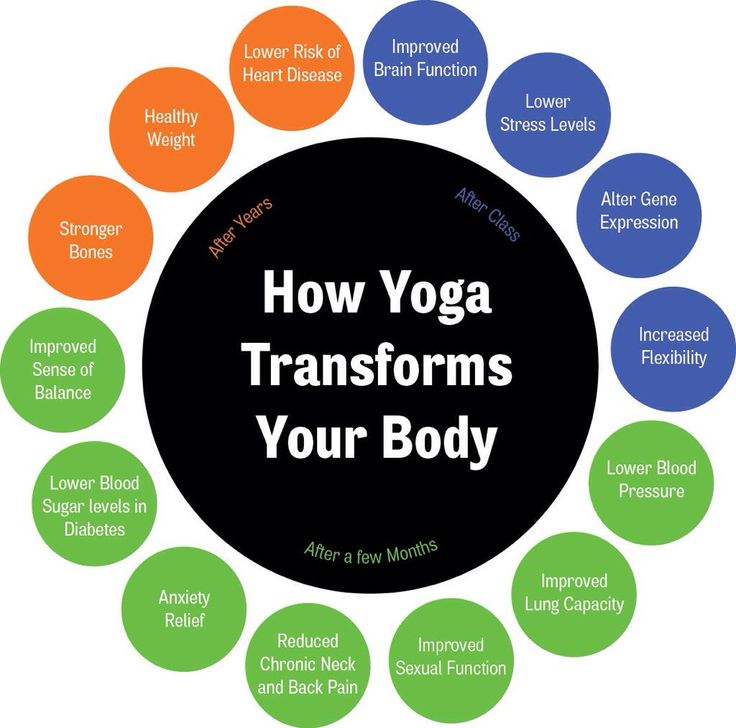 They are often practiced in vinyasa yoga classes. nine0004
They are often practiced in vinyasa yoga classes. nine0004
You may want to consider adding a Sun Salutation to your next yoga session to relieve anxiety.
Seated Neck Stretch
To perform seated neck stretch:
- Begin with Easy Pose (Sukhasana), also known as Comfortable Cross-Legged Pose.
Inhale and extend your right arm above your head.
Exhale to put your right hand on your left ear, gently pull your head to the right and your chin to your chest. - Hold for 3-5 breaths and relax. Change sides. nine0042
- Optional: Place a blanket under your buttocks for support, or stretch while sitting in a chair.
Cat Pose
To do the cat pose (Marjariasana):
- Cat and Cow Pose performed together.
- Get into a table top position on your hands and knees.
- Inhale and press into the palms, round the spine like a cat and lower the chin, crown and tailbone.
- As you exhale, take the cow pose.
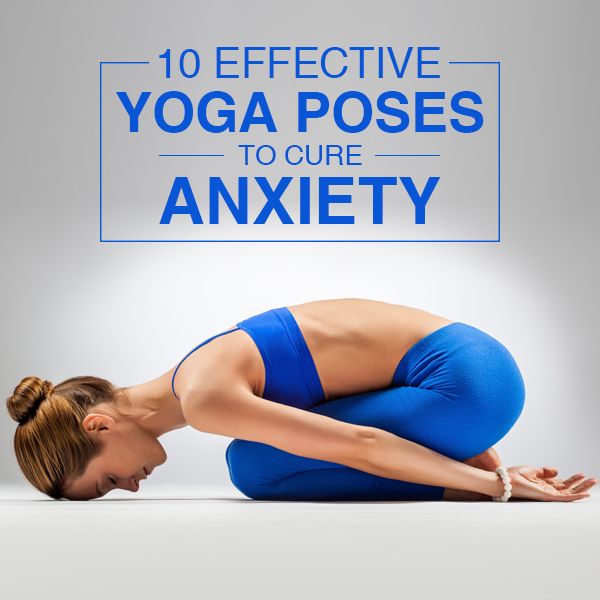 nine0049
nine0049 - From Cat Pose, exhale and lower your belly, expand your chest, and stretch the top of your head and tailbone up.
- Turn your inside elbows forward and avoid bending your shoulders.
- Inhale back into cat pose and exhale into cow pose.
- Repeat the movement pattern for 5-7 breaths, synchronizing each movement with the breath.
- From a position at the table, move your arms slightly forward and your knees back.
- Press down on your palms when you reach your lower back.
- Let your forehead touch the mat and try to relax your neck and shoulders.
- Inhale deeply and exhale through the nose for 5 to 7 breaths.
- Optional: Place a blanket under your knees and shins for extra support. Or, depending on your level of experience, you can bend your toes and stretch your buttocks up and back to come into Downward Facing Dog (Adho Mukha Svanasana).
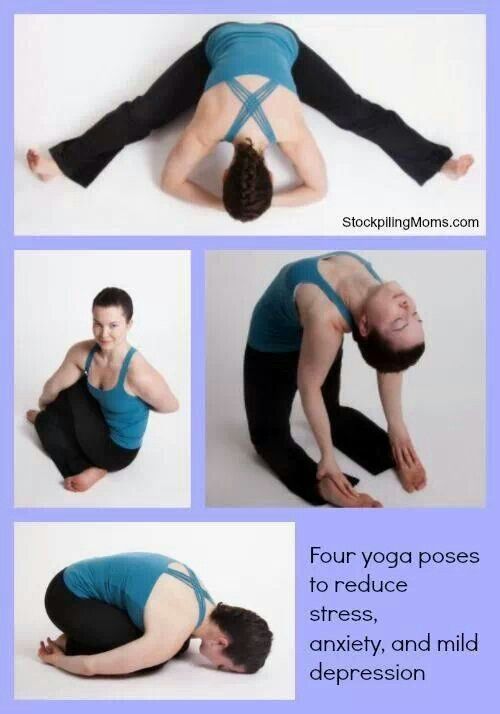 nine0042
nine0042 - From a table position, step your right foot forward into a lunge position and pull your left toes in. The toes should be shoulder-width apart, framing the front foot.
- Move your right leg forward until your leg is almost straight.
- Rest on your heel to bend your toes up and push your hips back slightly to stretch your right hamstring muscle. nine0042
- Hold for 3-5 deep breaths, then return to the tabletop position. Change sides.
- From a tabletop position, push your buttocks back toward your heels and stretch your legs far forward. nine0042
- Remove excess flesh from the sitting bones so you can feel them attach to the mat.
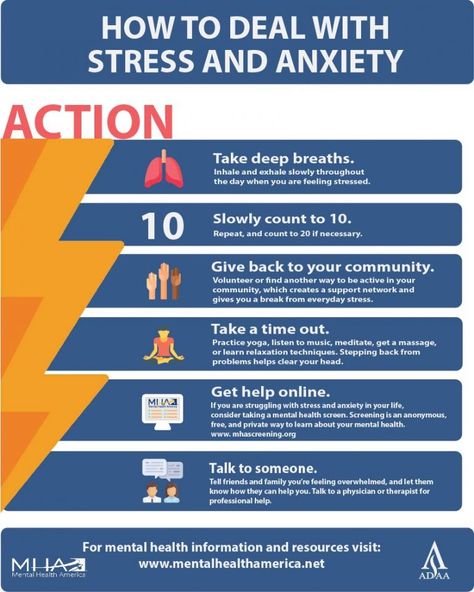
- Sit up straight, bend your legs and, while inhaling, extend your arms above your head.
- Exhale to bend at the hips as you begin to bend the torso towards the hips.
- Hands can be placed on the outside of the thighs, calves, ankles or feet, depending on your range of motion.
- Lower your chin to your chest to release the back of your neck. nine0042
- Breathe deeply, softening with each exhalation, staying here for 5-7 breaths.
- Lie on your back, knees bent, feet flat on the floor, arms at your sides, palms up.
- Adjust the position of your legs and arms until you feel comfortable and supported. nine0042
- Locate the neutral spine by allowing a slight bend in the back of the neck (cervical spine) and lower back (lumbar spine).
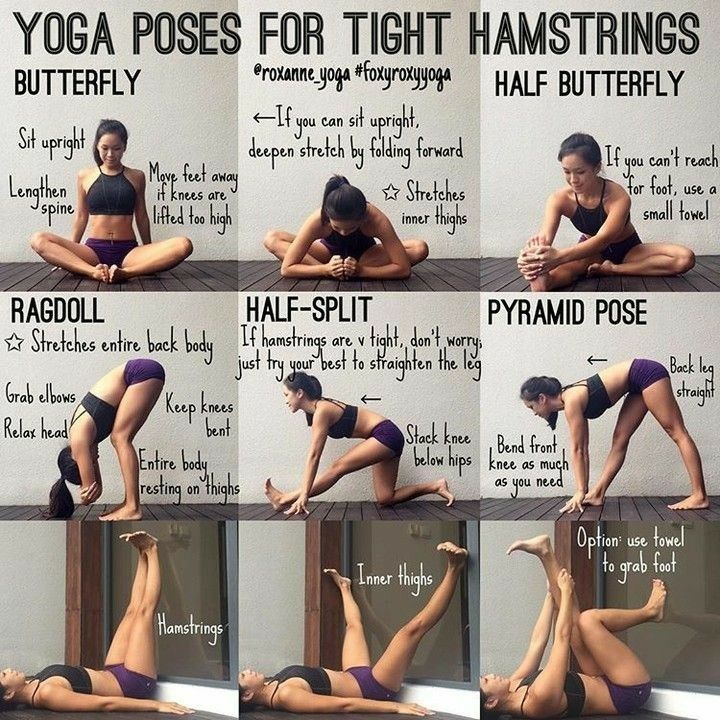
- Leave a space between your chin and chest and spread your arms a little wider.
- Breathe deeply. This is a great pose for relaxing your psoas and resetting your nervous system. You can stay here for a few minutes or longer.
- Optional: Spread your feet to the outer edges of the mat and let your knees touch each other. nine0042
- From constructive rest, spread your legs to the outer edges of the mat (if not already there).
- Inhale deeply, then exhale, allowing both knees to drop to the right, keeping the legs staggered.
- Gently turn your chin to the left to deepen the turn.
- Breathe deeply into your belly, lengthening your exhalations. nine0042
- After 5-7 inhalations, return your knees and chin to the starting position, adjusting your hips as needed.
- As you exhale, lower your knees to the left and turn your chin to the right.
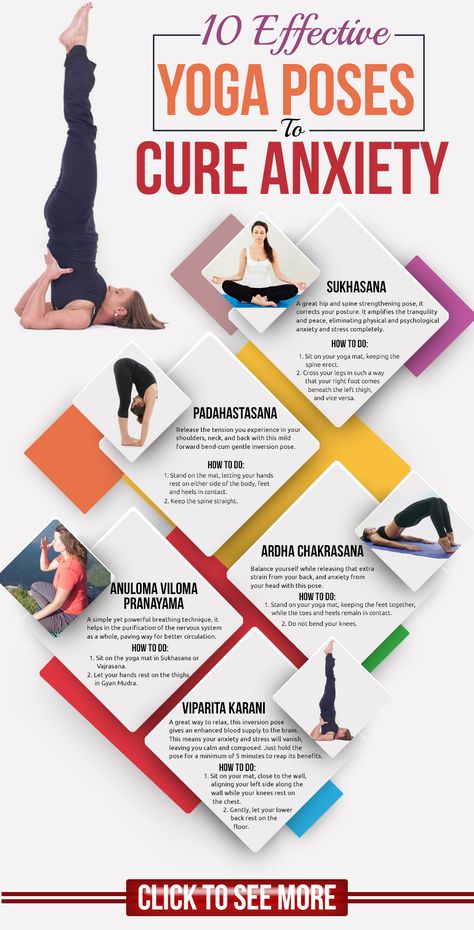
- Optional: fold or wrap your legs.
- From constructive rest, stretch your legs and adjust your hand position until you feel comfortable.
- Consider supporting this final rest pose with yoga props to help you feel grounded and secure. For example, you can put a folded blanket over your stomach and another behind your head. nine0042
- If your mind is still seething, keep Savasana on the shorter side (1-2 minutes). If you don't feel comfortable closing your eyes, keep them open and find something above your head to fix your gaze and focus on your breathing.
- Optional: Listen to guided meditation or ambient music.
- Yoga studio Vladimirskaya
- Yoga Center Sampsonievsky
Cow pose
To do the Cow Pose (Bitylasana):
Extended Puppy
To perform Extended Puppy Pose (Uttana Shishosana):
Half twine
To perform the half split (Ardha Hanumanasana):
Optional: Place your hands on the yoga blocks and slightly bend your front knee. You can also soften your chin towards your chest and allow your torso to bend towards your front knee.
Sitting Forward Bend
To do a seated forward bend (Pashchimottanasana):
Optional: Place a rolled-up blanket under your knees for support, especially if your hamstrings are tight.
Structural rest
To perform constructive rest (shavasana with bent legs):
Spinal twist on the back
To perform the spinal twist on the back (Supta Matsyendrasana):
Corpse Pose (Shavasana)
To do Corpse Pose (Shavasana):
Is yoga more effective than clinical treatment?
Although many people practice yoga to relieve symptoms of stress and anxiety disorders, it should not always be a substitute for clinical treatment, especially when a person is experiencing panic attacks or has been diagnosed with a severe anxiety disorder.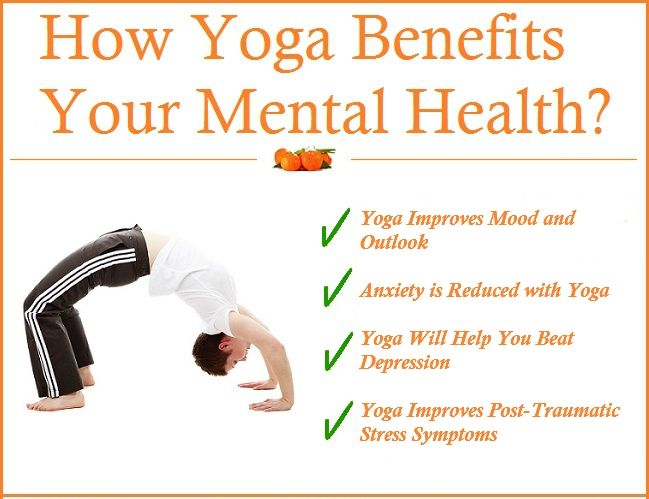 nine0004
nine0004
While proponents may argue that the "yoga high" experienced during yoga practice can help relieve stress and anxiety, it is important to keep in mind that this emotional state is often fleeting.
While yoga can be a healthy coping mechanism, relying on it to address a psychological condition is not an effective long-term solution on its own.
Everything can become unhealthy if taken to extremes. Our bodies thrive on variability, both physiologically and emotionally. Finding several ways to reduce anxiety would be the most beneficial for most people. In terms of stress management, the more resources we have, the better. nine0004
How to start yoga?
A 2018 review of research supports the practice of yoga for the relief of symptoms associated with anxiety disorders, but more clinical research is still needed before yoga can be used as a first-line treatment approach.
Talk to your doctor or mental health professional to see if yoga is right for you.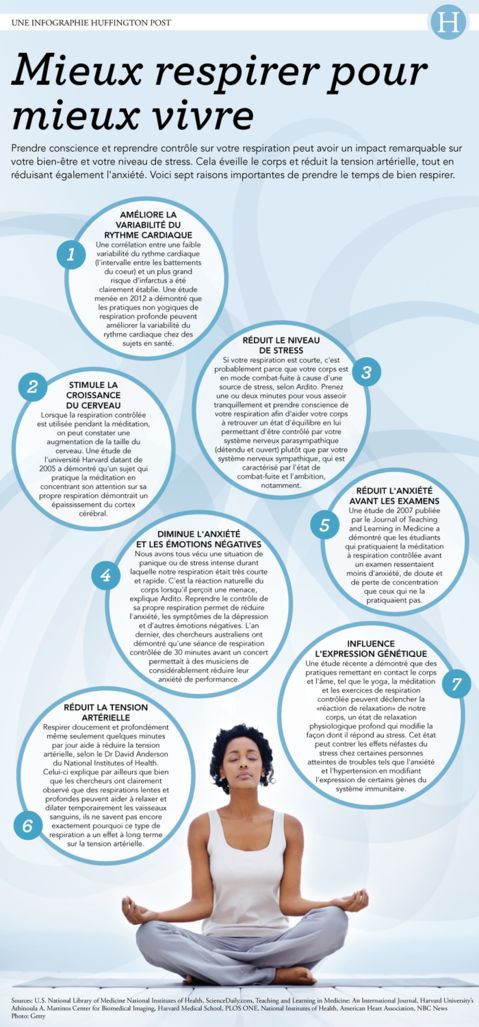 Yoga, practiced in combination with psychotherapy, medication, or both, can be a great addition to your treatment. nine0004
Yoga, practiced in combination with psychotherapy, medication, or both, can be a great addition to your treatment. nine0004
Yoga can increase self-efficacy, which can be a valuable tool for calming the mind and body to manage anxiety.
If you're ready to begin your yoga journey and explore the power of the present moment, the safest and most effective way to learn is in person with a yoga instructor. Yoga schedule for every day:
nine0000 Yoga practice that will relieve you of anxiety (PHOTOS)
The feeling of anxiety is connected with the work of the brain and the physiological reactions that it triggers in the body. “Anxiety can kick in without realizing what caused it,” write Robert Butera, Erin Byron, and Staffan Elgelid, authors of the bestselling Yoga Antistress. Gently soothes. Relieves anxiety" . - Under the influence of certain triggers (and they can be familiar music, the sound of a voice, a smell), the brain almost instantly activates chains of neurons that store the experience of contact with such things. When we are in a tense situation, or when our senses pick up on something that previously caused anxiety, the brain follows neural pathways that lead to feelings of stress and anxiety.” And already they trigger a number of physiological reactions in the body - rapid heart rate, increased sweating, trembling in the limbs, etc.
When we are in a tense situation, or when our senses pick up on something that previously caused anxiety, the brain follows neural pathways that lead to feelings of stress and anxiety.” And already they trigger a number of physiological reactions in the body - rapid heart rate, increased sweating, trembling in the limbs, etc.
Therefore, experts advise working with anxiety from two sides: both psychological and physiological. What steps will help with this?
* Change of belief . “The next time you feel anxious, realize that it is your brain that has become overly alert. There is no life-threatening emergency: it's just old programs being "awakened" by your overly sensitive brain. When you change your beliefs about stress and anxiety and react differently to them, your brain changes its structure again. As a result, you are on the path to mastering a calm response to what was once perceived as stress,” say Robert Butera, Erin Byron and Staffan Elgelid.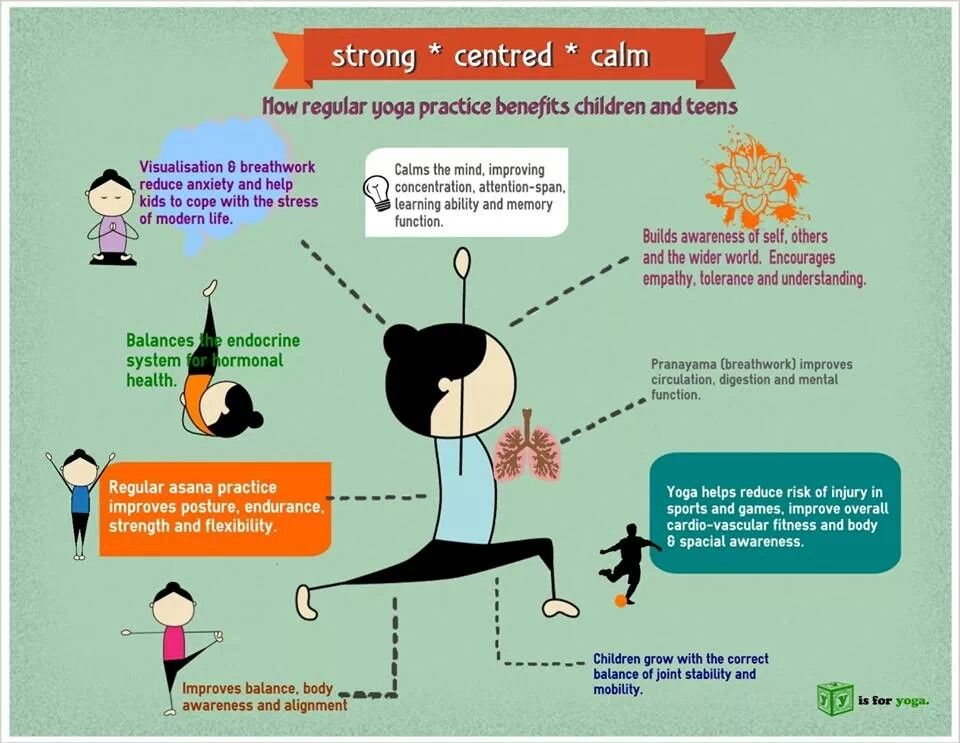 nine0004
nine0004
The ability to take a break between a stimulus (for example, expecting a conflict with a boss) and a reaction (panic) is very useful here. And this is where meditation helps a lot: they teach us to observe the sensations in the body, thoughts and the emotions they cause. Having mastered this skill on the mat, very soon you will be able to take it out of the yoga class.
Plus, the regular practice of meditation helps to change physiological responses as well. “In meditation, brain waves go from beta waves to alpha waves and eventually to theta waves. Breathing deepens, heart rate slows down, emotions calm down. You do nothing for this, just as you do not create a dream, ”the authors of the book write. nine0004
* Activation of the parasympathetic nervous system. It is responsible for the relaxation processes in the body. But in stressful moments, the sympathetic nervous system takes control - it prepares the body "for attack": it stimulates the release of adrenaline and cortisol, increases the heart rate, increases blood pressure, etc.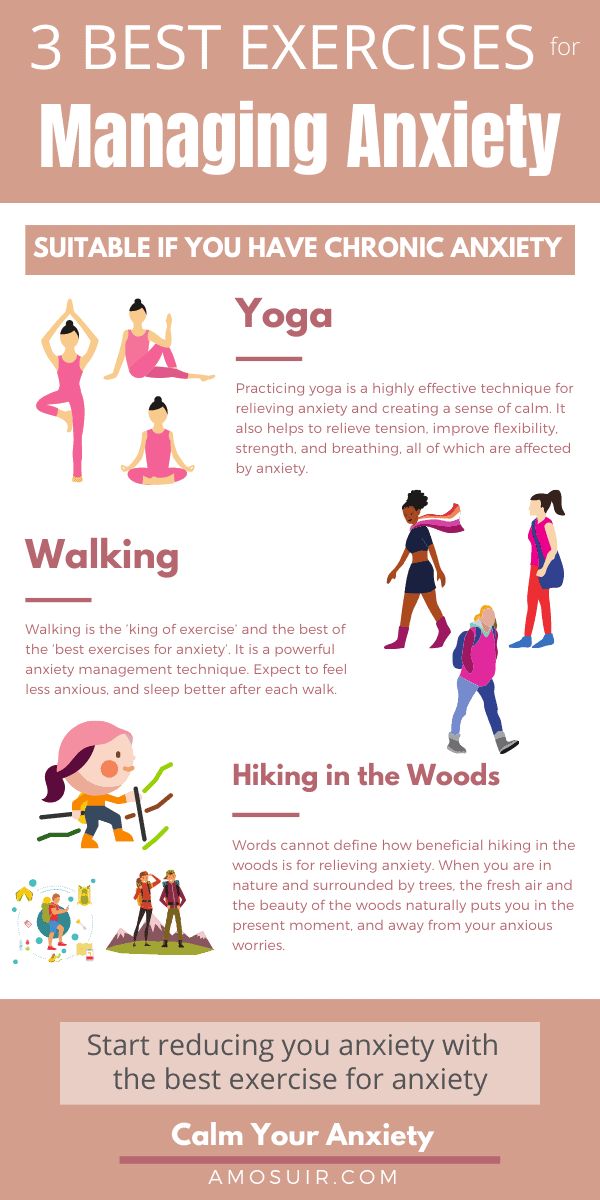 Breathing can become a "switch" of these systems: if we breathe deeply and calmly, the body receives a signal that nothing threatens our life, which means that we can again “give the wheel” to the parasympathetic nervous system. And this is where the practice of yoga comes in handy: using asanas or breathing techniques, you can quickly eliminate an anxiety attack. nine0004
Breathing can become a "switch" of these systems: if we breathe deeply and calmly, the body receives a signal that nothing threatens our life, which means that we can again “give the wheel” to the parasympathetic nervous system. And this is where the practice of yoga comes in handy: using asanas or breathing techniques, you can quickly eliminate an anxiety attack. nine0004
Consider the most effective techniques in more detail.
Yoga Practice: Breathing Exercises for Anxiety
They help reduce anxiety in the long term and can also be used as a first aid.
Full yogic breathing. “This is the most effective and simple form of pranayama, thanks to which the full volume of the lungs is used, breathing slows down, and this helps to fight anxiety,” comments Yana Ananyeva, hatha yoga teacher at the Taste & Color project. nine0280
How to do it.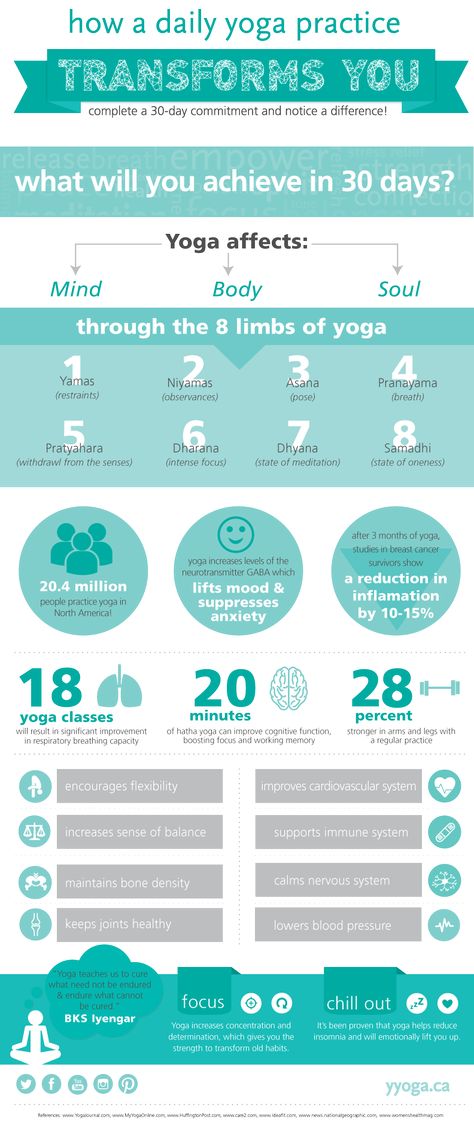 Sit in a comfortable sitting position with a straight back. Mentally divide your breath into three parts, direct the first of which into the stomach and inflate it like a balloon. With the second part of the inhalation, expand the lower ribs. Point the third part higher into the chest and feel how it rises. As you exhale, lower your chest, relax your ribs, deflate your stomach. “Practice this type of breathing for 5-10 minutes, trying to lengthen the exhalation. Soon you will feel how the heartbeat calms down, the pulse slows down, and anxiety dissolves, ”adds Yana Ananyeva. nine0004
Sit in a comfortable sitting position with a straight back. Mentally divide your breath into three parts, direct the first of which into the stomach and inflate it like a balloon. With the second part of the inhalation, expand the lower ribs. Point the third part higher into the chest and feel how it rises. As you exhale, lower your chest, relax your ribs, deflate your stomach. “Practice this type of breathing for 5-10 minutes, trying to lengthen the exhalation. Soon you will feel how the heartbeat calms down, the pulse slows down, and anxiety dissolves, ”adds Yana Ananyeva. nine0004
Ujjayi breath. This option can be mastered if full yogic breathing is easy enough for you.
How to do it. Sit up straight with a straight back, begin to breathe in full yogic breathing, while closing the glottis, and pushing the air out with effort, getting a hissing sound: on the inhale “so”, on the exhale “ha”. Do the practice for 3 to 15 minutes or until you feel that the anxiety attack has subsided.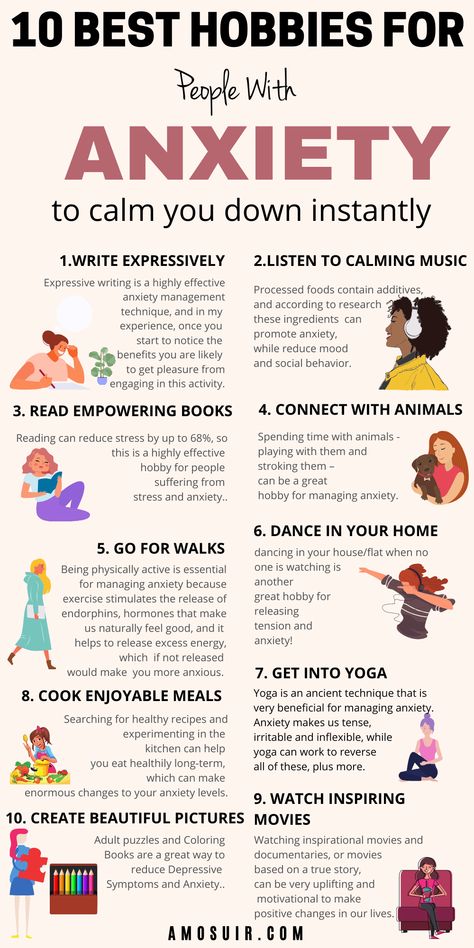
Nadi Shodhana . “This type of breathing literally translates as “cleansing the psychic network” and has a very beneficial effect on our nervous system, preventing anxiety from capturing your mind,” Yana explains. - Pranayama can be used as a prophylaxis, daily or at bedtime. It can be done either sitting or lying on your back.
How to do it. Place the thumb of the right hand against the right nostril, place the index and middle fingers at the point between the eyebrows, connect the ring and little fingers together. Inhale through the left nostril, close the left nostril with the ring finger, and open the right nostril and exhale through it. Without changing the position of the fingers, inhale through the right nostril, block it with your thumb, open the left and exhale the air. Continue in the same mode for another 5-15 minutes: inhale with the left - exhale with the right, inhale with the right - exhale with the left, inhale with the left - exhale with the right, etc.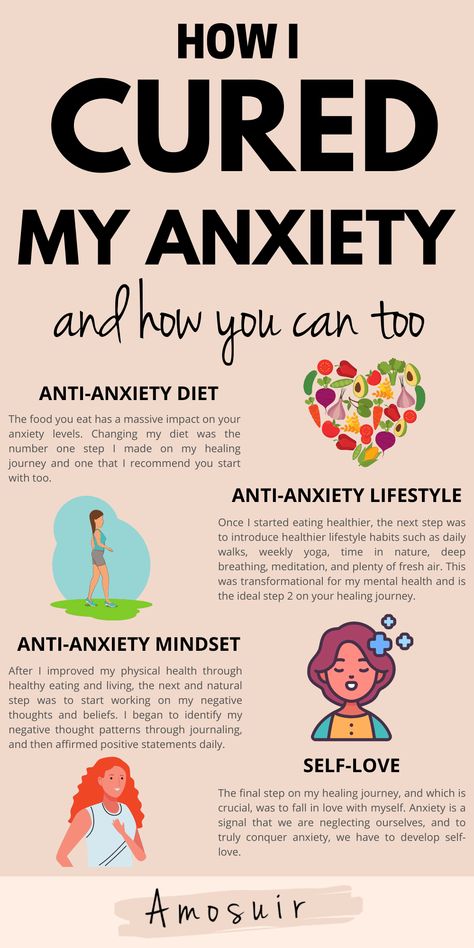 nine0004
nine0004
Practicing Yoga: Asanas for Anxiety
Some yoga asanas will be very effective as an anxiety pill. But they can also be used in the long run. The more often you engage in relaxing yoga practice, the faster you can “turn on” the parasympathetic nervous system in those moments when you need to calm down.
What postures will be effective for this?
Uttanasana
Stand up straight and with an exhalation begin to fold in the hip joints, bring the stomach closer to the hips. “This position of the body reduces pressure, and increases the level of gamma-aminobutyric acid (GABA) in the blood, which helps to get rid of stress reactions. Perform this asana every day to maintain a high level of GABA, ”adds Yana Ananyeva. nine0004
Balasana
Lower your knees to the floor, roll your pelvis onto your heels, rest your forehead on the floor, stretch your arms along the body.